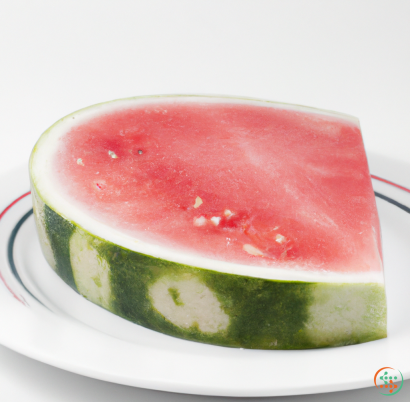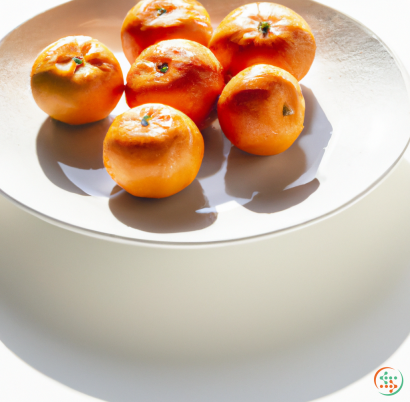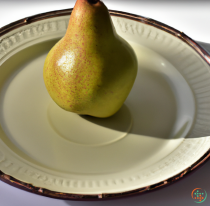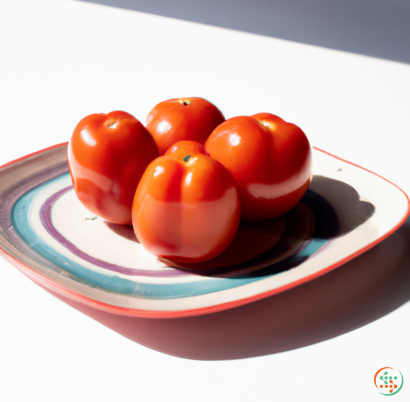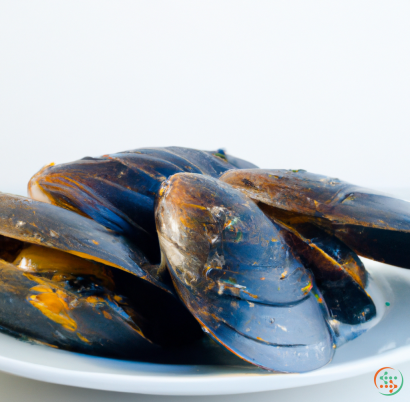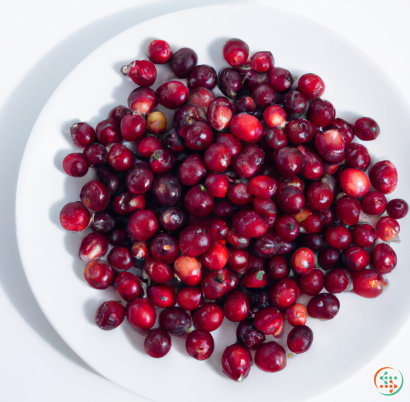Pineapple
A pineapple is one of the most popular and beloved fruits around the world, but where exactly did this tropical treat come from? And what sets it apart from other fruits available in the market today?
Origins
The pineapple can be traced back to its wild ancestor in Central and South America, where it is known as the Ananas comosus. It is believed that the fruit first appeared in the Caribbean about three thousand years ago before spreading throughout the region and the rest of the world.
The pineapple is a member of the bromeliad family, a group of plants that are native to the Americas. The plant is an example of a perennial herb, which means that it will live for more than one year, unlike annual plants that die off each season.
The name "pineapple" was derived from its unique shape which looks like a pinecone. The English name first appeared in the 17th century and its Latin name Ananas is derived from the Guarani word for perfume, since the fruit gives off a pleasant fragrant aroma.
Growing
Pineapple plants are small, with spiky leaves that look like swords. The leaves are also covered in tiny spikes known as ‘eyes’. The plants take around 18 months to 2 years to produce full size fruit, and can reach up to 5ft tall when fully grown.
A single pineapple plant is capable of producing up to 200 pineapple fruits in its lifetime. During the months of December through to March the pineapple plant produces an inflorescence (flower cluster) of up to 200 flowers.
The flowers are pollinated by birds and insects, with the latter being more effective at producing fruit. When the flowers are pollinated, their fleshy petals dry up and form the pineapple’s distinctive crown.
It is important to note that while the pineapple is native to the Americas, today it is produced on a global scale. This is largely due to the introduction of American pineapples to Hawaii and the Philippine Islands in the 1900s.
Nutritional Benefits
The pineapple is an excellent source of nutrients and has a number of health benefits. Perhaps most notably, it is high in vitamin C, which helps the body absorb iron and maintain a healthy immune system. It is also a good source of manganese, which helps protect cells from free radical damage.
In addition to these vitamins and minerals, the pineapple is also high in dietary fiber and antioxidants. This can aid in digestion and help prevent various illnesses such as cancer and heart disease.
As if this weren’t enough, the pineapple also contains bromelain, a compound that is often used to reduce inflammation and soothe tender muscles and joints. Bromelain has been used in traditional medicine for centuries and is now a popular supplement.
Taste and Preparation
Pineapple has a sweet, tart and juicy taste with citrus notes and a hint of nuttiness. It can be eaten fresh, canned, or frozen, but the most popular way to enjoy pineapple is to cut it into slices and enjoy it straight, either fresh or canned.
It is also one of the few fruits that goes well in both savory and sweet dishes. It can be grilled, used in stir-fries, salads, chutneys and salsas, as well as in desserts such as cakes and pies.
Moreover, its juice is used in a variety of cocktails, and its distinctive flavor pairs well with other tropical fruits like mango and coconut. Finally, pineapple makes an excellent topping for pizza, adding a flavor that is both sweet and savory.
Conclusion
The pineapple is one of the most versatile and popular fruits around due to its unique flavor, health benefits and numerous uses. From tropical cocktails to pizza toppings, there is no shortage of ways to enjoy this sweet and tart delight.
The pineapple is a tasty, juicy and delectable piece of tropical fruit both in its fresh and processed form. But have you ever wondered how it moves from being a small, hard-shelled bump on a tree to a succulent piece of food on a dinner plate? This journey begins with cultivation, processing and finally transport before reaching a dinner plate sometime thousands of miles away. Let’s take a closer look at this fascinating process.
Cultivation
The pineapple, or Ananas comosus, is a member of the Bromeliad family and originates in South America. While wild varieties still exist in many parts of the tropical world, the export quality of pineapple is cultivated in a variety of countries including Brazil, Hawaii, Thailand, Costa Rica, and the Philippines.
When it comes to farming pineapple, produced by commercial operations both for local trade as well as export, farmers begin to propagate new generations of plants from crowns (clusters of leaves) from mature fruits in order to maintain the desired variety of pineapple they are growing.
These pineapple plants are usually shade-grown, with wild varieties of bamboo or other fast-growing trees being planted around the plot of land to protect the pineapple plants from intense sunlight during peak hours. Although soil health is also an important factor in pineapple cultivation, the surrounding tree cover protects the pineapple-fruit from excessive sun exposure, reduces the plant’s water requirements and lowers pest levels, thus improving the overall growth of the plants.
Once suitable soil is prepared, the “setts” - those are crowns from fully ripened pineapples - are planted between 15 and 20 cm apart. To ensure good regeneration, the farmers make sure to keep the soil loose, moist and far from weeds.
In the first year, plants are watered every two days, and are not fertilized until six or seven months afterward, at which point a high-nitrogen fertilizer is applied.
It takes 12-18 months before farmers start to see results. The pineapple plant needs warm and humid conditions to thrive. During the fruiting stage, farmers must water the plants frequently and carefully measure the nutrient levels of the soil.
Harvesting
In countries such as Costa Rica, the harvest season lasts all year long, with fruits maturing every month. There, pineapples can be harvested as young as 5 months old, but normally mature in 10-14 months.
To determine if a pineapple is mature and ready to be harvested, farmers select a few fruits to check the weight and measure the sugar, acidity and vitamin C content. If the criteria are met, farmers are ready to begin harvesting the pineapple trees.
Pineapple is a delicate fruit that needs to be hand-picked in order to be visually inspected for its sugar and acid levels. The leaves and tops of the fruit should be bright green, with a nice yellow or golden color. To be safe, farmers inspect the fruit for any fungi, diseases or pest damages - both on the outside and the inside - before collecting it.
After the chosen pineapple is carefully cut off from its stalk (leaving a minimum of 2 cm of base), harvested pineapple is usually placed in the sun with its outer leaves still on and protected from the elements.
Processing
From the field, freshly harvested and sun-ripened pineapple is taken to the pineapple-processing facility where thousands of tropical fruits continuously flow in. The pineapple is prepared by knocking off its leaves and skin, and then cut into quarters. At this point, machines sort and grade the pineapple according to its size and quality.
Afterwards, the pineapple is placed in a machine known as a binder, where hot juices are added to the chunks and transformed into cubes, slices or halves. At this stage, the pineapple pieces are inspected and sorted according to the customer’s requirements.
The final process includes packing the pineapple into airtight barrels, tins or boxes for transportation or frozen for later use. The packed or mini-frozen pineapple is sent to port for shipment.
Transportation
When it comes to transporting pineapple, packing is essential as it ensures the fruit reaches its destination safely. To achieve this, food-grade packaging materials are used, such as cans and barrels, cardboard boxes, and plastic containers.
These materials are ideal for protecting and shipping pineapple as they are strong and provide insulation against temperature variations. For countries such as Costa Rica, fresh pineapple is packed in the ready-to-eat manner, consisting of heads, quarters, and slices.
Ultimately, the pineapple is loaded onto a seaship, which takes it to its destination port. This can mean a voyage of 15 to 21 days, depending on its destination. For example, pineapple being shipped from Costa Rica to Amsterdam takes approximately 15 days.
Reaching the Destination Plate
Once the pineapple reaches its destination port, it is inspected by customs and agriculture officials and then shipped to retailers or supermarkets. This can mean a further journey of road haulage, rail, or airfreight, depending on the destination.
For example, when pineapple is sent domestically within the United States, it is often moved by refrigerated trucks a few hundred kilometers to its final destination in a matter of days. On the other hand, a pineapple shipment from Costa Rica to the UK would take an international charter flight, taking anywhere from 2 to 7 days.
In either case, an important aspect of the journey is the preservation of the pineapple during transit. This is done through an array of methods, including vacuum-sealing, quick freezing and temperature-controlled transportation.
Finally, after travelling thousands of miles and many days, the pineapple has reached its final destination — the shop. From here, it travels the last leg of its journey to its rightful place on a plate in the home. It can be eaten fresh, used to make a delicious sweet or savory dish, or even crafty creations that put this much-loved fruit to good use.
Conclusion
From the fields of Costa Rica to a dinner table thousands of miles away, a pineapple is a fascinating piece of fruit that winds its way through the stages of cultivation, processing and transport. Though much of the journey is mechanical, none of it would be possible without the hard work of the farmers, pickers and other industry professionals who work tirelessly in order to bring this delicious fruit to your plate.
| Vitamin A | 0.003 mg | |
| Beta-Carotene | 0.035 mg | |
| Vitamin E | 0.02 mg | |
| Vitamin K | 0.7 ug | |
| Vitamin C | 0.0478 grams | |
| Vitamin B1 | 0.08 mg | |
| Vitamin B2 | 0.03 mg | |
| Vitamin B3 | 0.5 mg | |
| Vitamin B4 | 0.0055 grams | |
| Vitamin B5 | 0.21 mg | |
| Vitamin B6 | 0.11 mg | |
| Vitamin B9 | 0.018 mg |
| Calcium | 0.013 grams |
Daily Value 1.3 g
|
| Iron | 0.29 mg |
Daily Value 0.018 g
|
| Magnesium | 0.012 grams |
Daily Value 0.4 g
|
| Phosphorus | 0.008 grams |
Daily Value 1.25 g
|
| Potassium | 0.109 grams |
Daily Value 4.7 g
|
| Sodium | 0.001 grams |
Daily Value 2.3 g
|
| Zinc | 0.12 mg |
Daily Value 0.011 g
|
| Copper | 0.11 mg |
Daily Value 0.9 mg
|
| Manganese | 0.93 mg |
Daily Value 0.0023 g
|
| Selenium | 0.1 ug |
Daily Value 0.055 mg
|
| Tryptophan | 0.005 grams | |
| Threonine | 0.019 grams | |
| Isoleucine | 0.019 grams | |
| Leucine | 0.024 grams | |
| Lysine | 0.026 grams | |
| Methionine | 0.012 grams | |
| Cystine | 0.014 grams | |
| Phenylalanine | 0.021 grams | |
| Tyrosine | 0.019 grams | |
| Valine | 0.024 grams | |
| Arginine | 0.019 grams | |
| Histidine | 0.01 grams | |
| Alanine | 0.033 grams | |
| Aspartic Acid | 0.121 grams | |
| Glutamic Acid | 0.079 grams | |
| Glycine | 0.024 grams | |
| Proline | 0.017 grams | |
| Serine | 0.035 grams |
| Glucose | 1.73 grams |
|
| Fructose | 2.12 grams |
|
| Sucrose | 5.99 grams |
|
| Total Sugars | 9.9 grams |
per 100g
|
| Palmitic acid (16:0) | 0.01 grams |
|
| Total Saturated fatty acids: | 0.01 g | |
| Oleic acid (18:1) | 0.01 grams |
|
| Total Monounsaturated fatty acids: | 0.01 g | |
| Linolenic acid (18:3) | 0.02 grams |
|
| Linoleic acid (18:2) | 0.02 grams |
|
| Total Polyunsaturated fatty acids: | 0.04 g | |
| Phytosterols | 0.01 grams |
|
| Total Sterols: | 0.01 g | |

